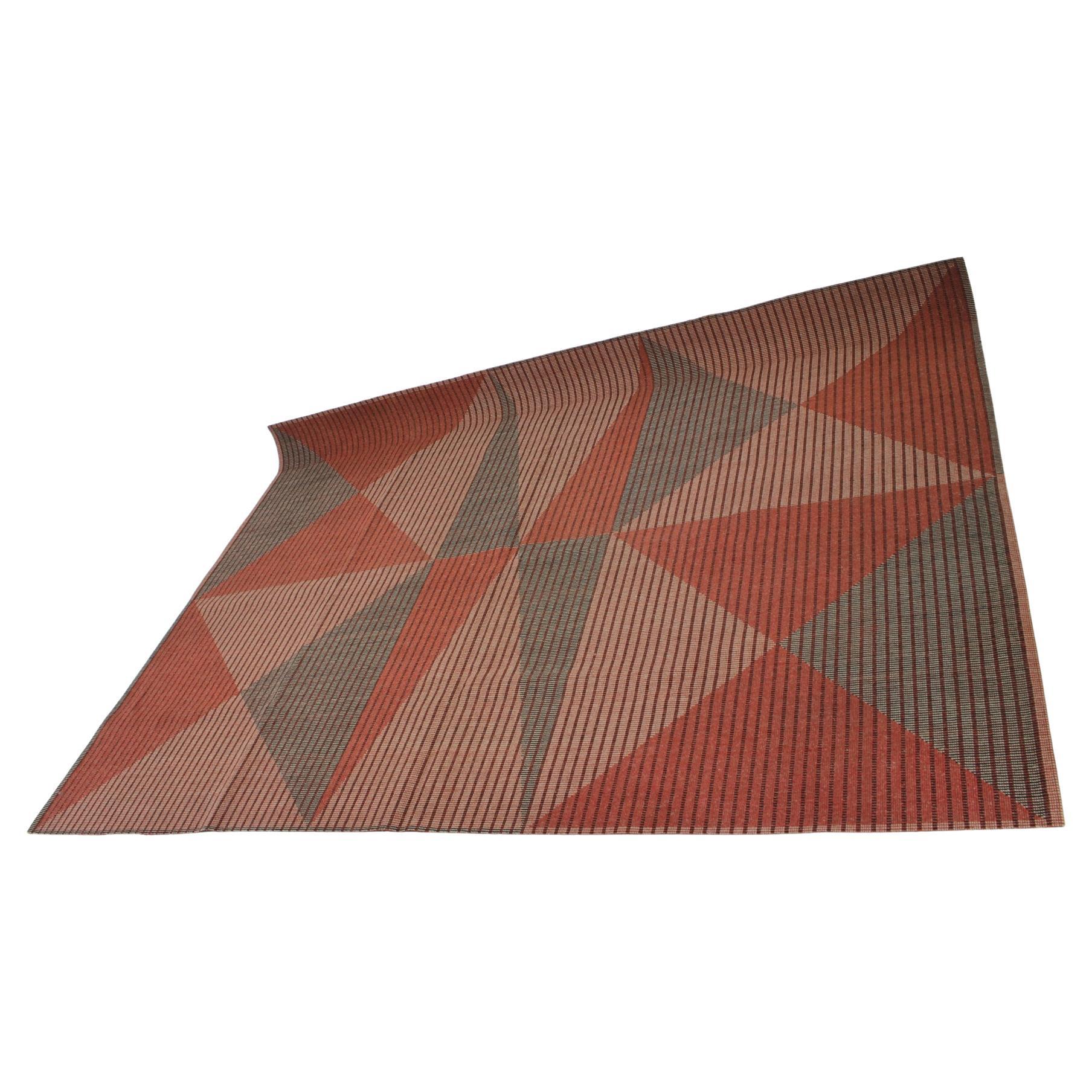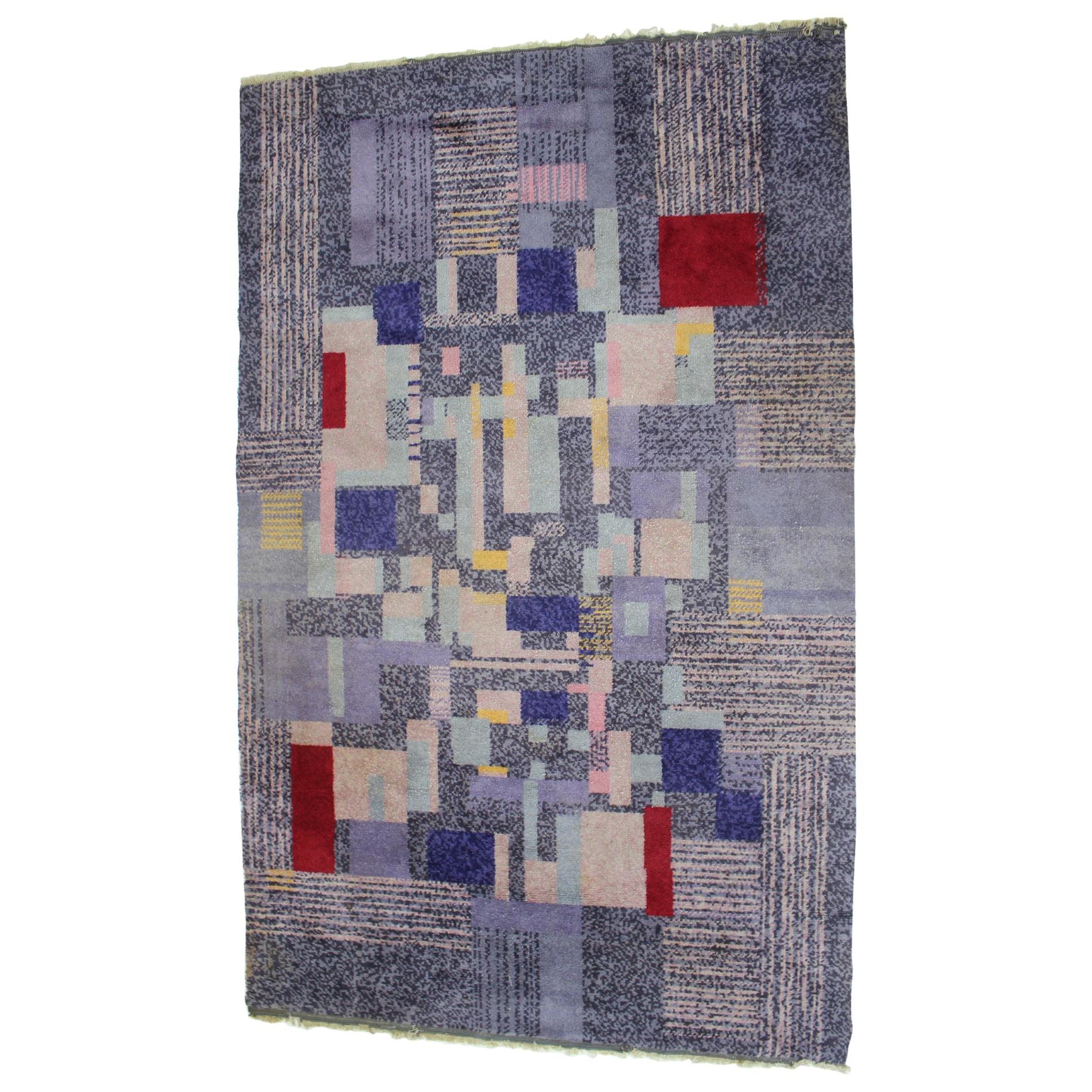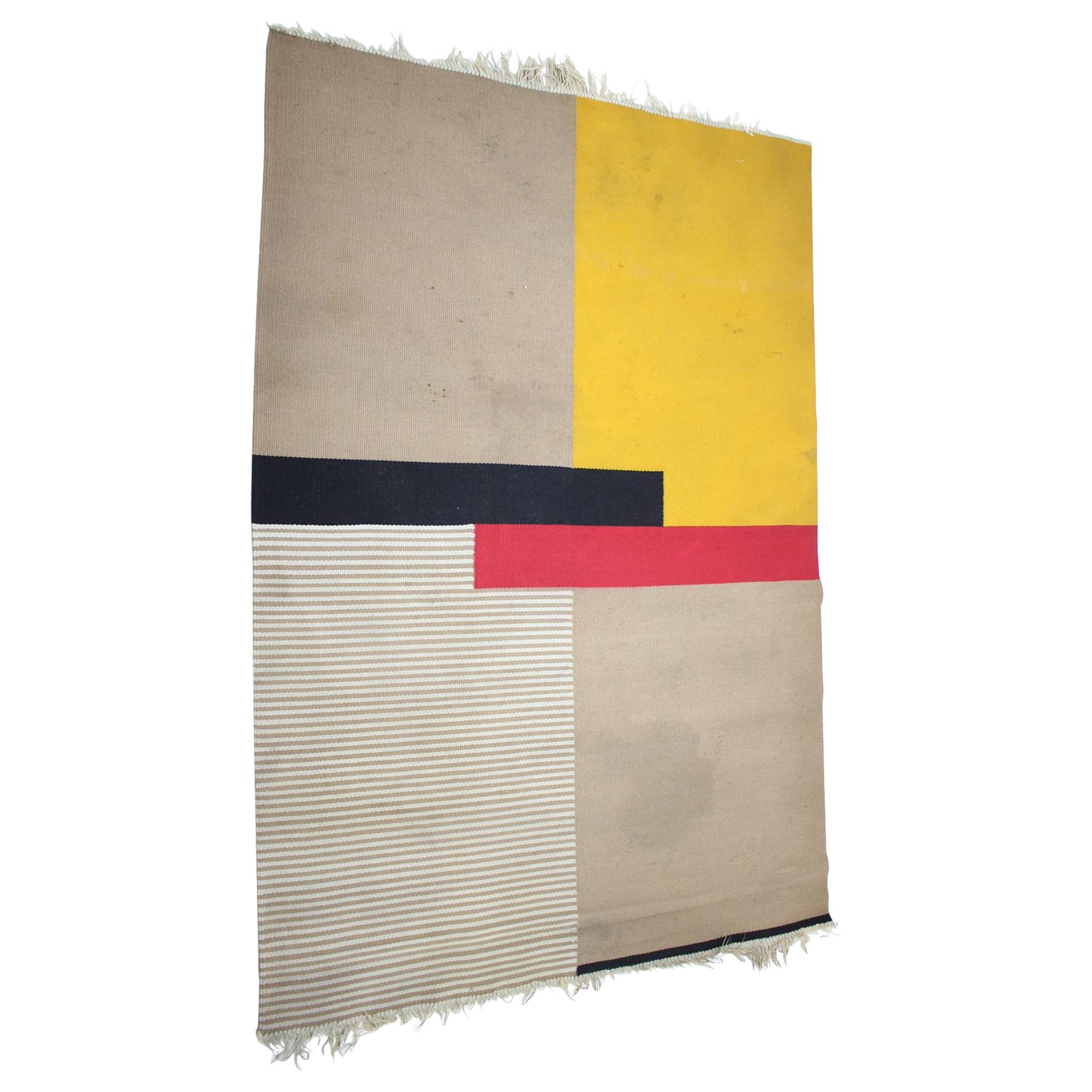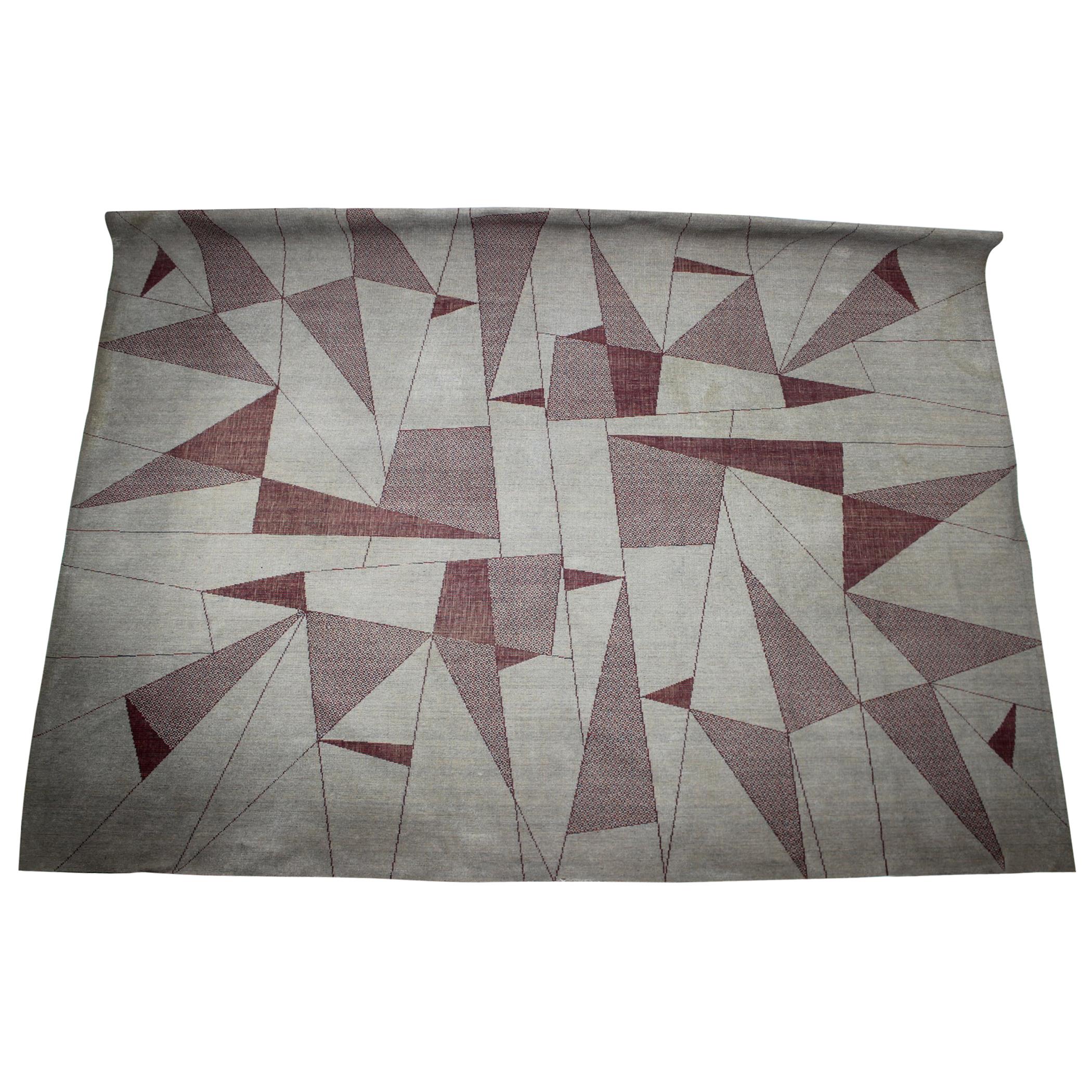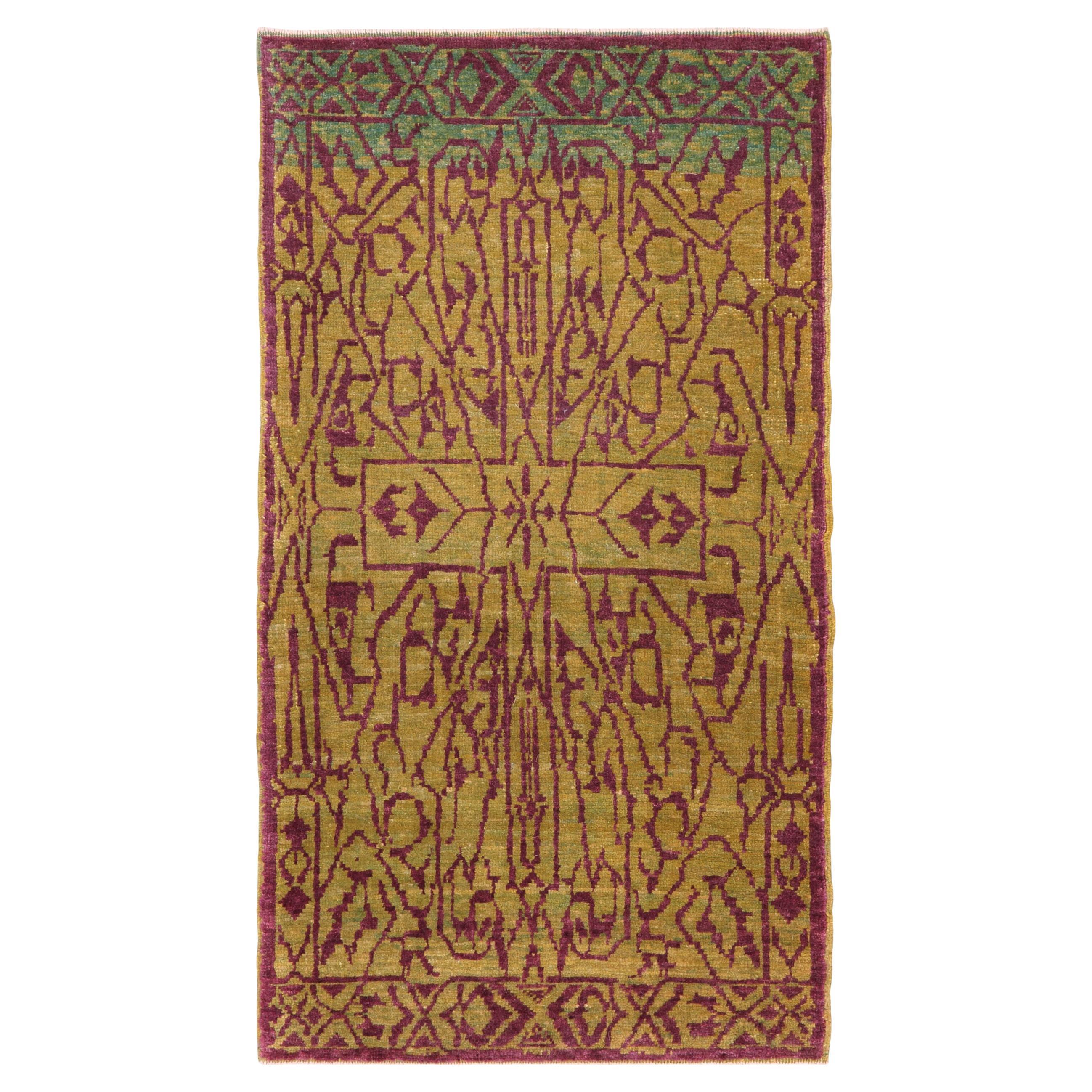Items Similar to Geometric Abstract Design Carpet / Rug, 1950s
Want more images or videos?
Request additional images or videos from the seller
1 of 14
Geometric Abstract Design Carpet / Rug, 1950s
About the Item
- 1950s
- Czechoslovakia
- good original condition
- cleaned
- Dimensions:Width: 51.97 in (132 cm)Length: 83.47 in (212 cm)
- Style:Mid-Century Modern (Of the Period)
- Materials and Techniques:Grasscloth
- Place of Origin:Czech Republic
- Period:
- Date of Manufacture:1950
- Condition:
- Seller Location:Praha, CZ
- Reference Number:
About the Seller
4.9
Platinum Seller
These expertly vetted sellers are 1stDibs' most experienced sellers and are rated highest by our customers.
Established in 2012
1stDibs seller since 2016
2,384 sales on 1stDibs
Typical response time: 8 hours
- ShippingRetrieving quote...Ships From: Litoměřice, Czech Republic
- Return PolicyA return for this item may be initiated within 3 days of delivery.
More From This SellerView All
- Beautiful Geometric Abstract Design Wool Carpet / Rug, 1950sLocated in Praha, CZ- 1950s - Czechoslovakia - Perfect original condition - professionally cleansed jt.Category
Vintage 1950s Czech Mid-Century Modern More Carpets
MaterialsWool
- Xl Midcentury Bouclé Abstract Design Geometric Rug / Carpet, 1950sLocated in Praha, CZ- around 1960s - Czechoslovakia - bouclé type - original and very good condition - well preserved, cleaned jr.Category
Vintage 1950s Czech Mid-Century Modern More Carpets
MaterialsWool
- Midcentury Design Rare Geometric Carpet/Rug, 1950sLocated in Praha, CZ- Czechoslovakia, 1950s - Good original condition with minor defects - Bright colours - Beautiful geometric patterns.Category
Vintage 1950s Czech Mid-Century Modern More Carpets
MaterialsWool
- Pair of Big Midcentury Design Abstract Geometric Carpets, Rugs, 1950sLocated in Praha, CZ- 1950s, - Czechoslovakia - Very simple design - Few stains on both - Double sided.Category
Vintage 1950s Czech Mid-Century Modern More Carpets
MaterialsWool
- Unique Big Extra Large Abstract Design Geometric Carpet / Rug, 1950sLocated in Praha, CZ- 1950s - Czechoslovakia - very good original condition - Will be professionally cleansed - Marked with number.Category
Vintage 1940s Czech Mid-Century Modern More Carpets
MaterialsTextile
- Original Midcentury Abstract Design Carpet / Rug, 1950sLocated in Praha, CZ- 1950s, - Czechoslovakia, bouclé - Good original condition, professionally cleansed.Category
Vintage 1950s Czech Mid-Century Modern More Carpets
MaterialsTextile
You May Also Like
- Ararat Rugs Mamluk Wagireh Rug with Geometric Design Revival CarpetBy Ararat RugsLocated in Tokyo, JPThis geometric lattice pattern rug has the impression that it is only part of a larger scheme-designed 15th-century rug from the Mamluk era, Cairo region, Eygpt. These designs have o...Category
21st Century and Contemporary Turkish Revival Turkish Rugs
MaterialsWool, Natural Fiber, Organic Material
- Art Deco Carpet Turkish Abstract Design, 1950-1970Located in Ferrara, ITThis is a semi-antique Turkish Turk deco carpet woven in Turkey during the mid-20th century circa 1950 - 1970's and measures 327 x 243 CM in size. It has an all-over modern design wi...Category
Mid-20th Century Turkish Other Turkish Rugs
MaterialsWool
- Ararat Rugs Modern Rug with Mamluk Geometric Design, Natural Dyed CarpetBy Ararat RugsLocated in Tokyo, JPThis rug has an interpreted design composed of a geometric lattice pattern taken from a part of the Mamluk rug, filling the field elegantly, has the impression that it is only part of a larger scheme designed 15th-century rug from the Mamluk era, Cairo region, Eygpt. Mamluk carpets originated in a physical environment that lacked the combination of abundant marginal grazing land and a temperate climate with cool winters that were common to most carpet-weaving areas in the Islamic world. While related to a broader tradition of Turkish weaving centered in Anatolia, far to the north, the designs of these carpets include atypical elements, such as stylized papyrus plants, that are deeply rooted in Egyptian tradition. Their unusual composition and layout probably represent an attempt to develop a distinctive product that could in effect establish a “Mamluk brand” in the lucrative European export market. The uncharacteristic color scheme—devoid of the undyed white pile and employing a limited range of three or five hues in much the same value—also suggests a conscious attempt to create a particular stylistic identity. Also virtually unique in the world of Islamic carpets is the S-spun wool. It has been argued that the tradition of clockwise wool spinning originated in Egypt because of the earlier Egyptian tradition of spinning flax into linen thread. Details of the plant’s botanical structure make it impossible to spin flax fiber in the more common counterclockwise direction utilized throughout the Middle East for wool and cotton. Mamluk carpets with the color combinations seen in the Simonetti are now generally accepted as part of an earlier tradition that has many links to the weaving of Anatolia, Iran, and Syria. The “three-color” Mamluk carpets, well represented in the Metropolitan’s collection, represent a later development that continued well after the Ottoman conquest of Egypt in 1517. Many such carpets may have been produced well into the seventeenth century, and possibly even later. (Walter B. Denny in [Ekhtiar, Soucek, Canby, and Haidar 2011]). The design of the rug is interpreted by our designers from our Mamlouk-type rugs collection and soft colors are used for this rug. Color summary: 2 colors of total Bamboo Beige 99 (only specially washed) Feldgrau 414 (Chamomile – indigo) Group: Islamic Rugs...Category
21st Century and Contemporary Turkish Revival Turkish Rugs
MaterialsWool, Natural Fiber, Organic Material
- Ararat Rugs Modern Rug with Mamluk Geometric Design, Natural Dyed CarpetBy Ararat RugsLocated in Tokyo, JPThis rug has an interpreted design composed of a geometric lattice pattern taken from a part of the Mamluk rug, filling the field elegantly, has the impression that it is only part of a larger scheme designed 15th-century rug from the Mamluk era, Cairo region, Eygpt. Mamluk carpets originated in a physical environment that lacked the combination of abundant marginal grazing land and a temperate climate with cool winters that were common to most carpet-weaving areas in the Islamic world. While related to a broader tradition of Turkish weaving centered in Anatolia, far to the north, the designs of these carpets include atypical elements, such as stylized papyrus plants, that are deeply rooted in Egyptian tradition. Their unusual composition and layout probably represent an attempt to develop a distinctive product that could in effect establish a “Mamluk brand” in the lucrative European export market. The uncharacteristic color scheme—devoid of the undyed white pile and employing a limited range of three or five hues in much the same value—also suggests a conscious attempt to create a particular stylistic identity. Also virtually unique in the world of Islamic carpets is the S-spun wool. It has been argued that the tradition of clockwise wool spinning originated in Egypt because of the earlier Egyptian tradition of spinning flax into linen thread. Details of the plant’s botanical structure make it impossible to spin flax fiber in the more common counterclockwise direction utilized throughout the Middle East for wool and cotton. Mamluk carpets with the color combinations seen in the Simonetti are now generally accepted as part of an earlier tradition that has many links to the weaving of Anatolia, Iran, and Syria. The “three-color” Mamluk carpets, well represented in the Metropolitan’s collection, represent a later development that continued well after the Ottoman conquest of Egypt in 1517. Many such carpets may have been produced well into the seventeenth century, and possibly even later. (Walter B. Denny in [Ekhtiar, Soucek, Canby, and Haidar 2011]). The design of the rug is interpreted by our designers from our Mamlouk-type rugs collection and vivid colors are used for this rug. Color summary: 2 colors in total; Imperial Red 426 (Madder Root) Sunray Color 405 (Henna) Group: Islamic Rugs...Category
21st Century and Contemporary Turkish Revival Turkish Rugs
MaterialsNatural Fiber, Organic Material, Wool
- Handmade Red Turkish Area Rug, Vintage Geometric Design Wool CarpetLocated in Philadelphia, PAA finely hand-knotted vintage Turkish rug from 1960s. The rug is made of medium wool pile on wool foundation. It is heavy and lays flat on the floor, in very good condition with no i...Category
Mid-20th Century Turkish Tribal Turkish Rugs
MaterialsWool
- Ararat Rugs Mamluk Wagireh Rug with Geometric Design Revival Carpet Natural DyedBy Ararat RugsLocated in Tokyo, JPThis geometric lattice pattern rug has the impression that it is only part of a larger scheme designed 15th-century rug from the Mamluk era, Cairo region, Eygpt. These designs have o...Category
21st Century and Contemporary Turkish Revival Turkish Rugs
MaterialsNatural Fiber, Organic Material, Wool

